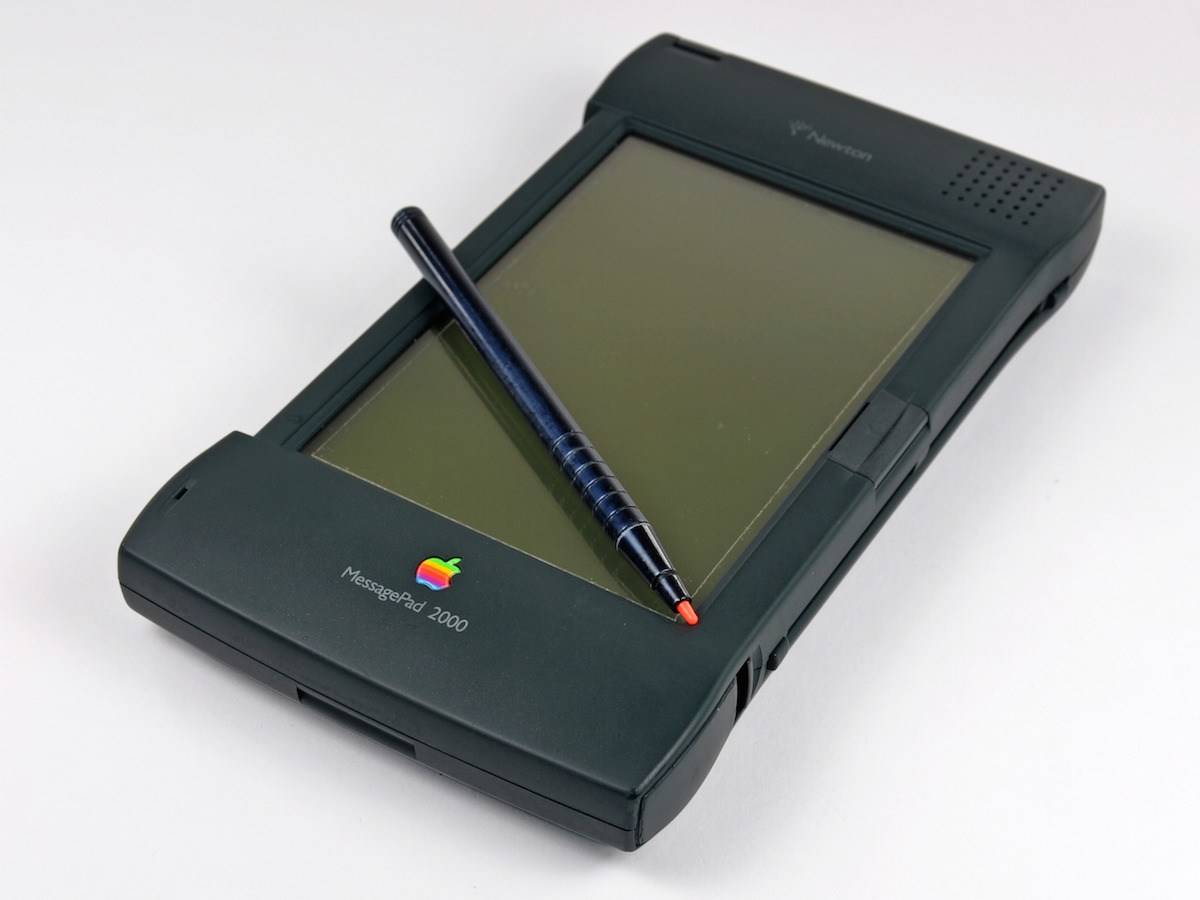 May 22, 1997: Apple spins off its Newton division. The new company’s first job? Selling the MessagePad 2000 PDA.
May 22, 1997: Apple spins off its Newton division. The new company’s first job? Selling the MessagePad 2000 PDA.
Newton Inc. also has a mandate to develop new technologies and market existing ones. “We have a solid business plan and a strong management team in place to optimize the value of Newton technology for corporate users and take Newton technology into a new era,” says Sandy Benett, former vice president of Apple’s Newton Systems Group and chief operating officer of the new venture.
Instead, it turns out to be the beginning of the end for the ahead-of-its-time Apple PDA.
The Newton’s big break
On paper, the Newton had turned a corner by 1997. The earliest devices, shipped in 1993, packed promise but failed to fully deliver. The much-anticipated handwriting-recognition system proved particularly troublesome, effectively turning the Newton into a punchline on shows like The Simpsons.
By 1995, those problems were largely solved. Around the time of the Newton MessagePad 120, Apple debuted its vastly superior NewtonOS 2.0, which fixed many of the problems with handwriting recognition that plagued earlier models.
March 1997’s MessagePad 2000 was the best Newton yet. It became a critical and commercial success, thanks to major upgrades including a faster processor and a larger, higher-resolution display. (It measured 480 by 320 pixels, compared to the previous model’s 320 by 240.)
eMate 300 design offers glimpse of Apple’s future
That same month, Apple also introduced the eMate 300, one of the most interesting products to come out of the Newton line. This $800 PDA packed a built-in keyboard into a colorful and curvaceous clamshell design, prefiguring Apple designer Jony Ive’s later iMac G3 and iBook. Aimed initially at the education market, the eMate 300 was one of the most unique-looking Apple products of its day.
With Steve Jobs back at Apple (though still not running it), the fact that the Newton division was being spun out as its own company was taken by many as a good thing. Taking R&D costs into account, the Newton still wasn’t a money-spinner for Apple.
However, interest in mobile devices was growing all the time.
“Over the past year, we have seen the Newton Systems Group launch compelling products based on the Newton operating system,” said Apple CEO Gil Amelio at the time. “We believe that the time is right to establish the group as a focused entity. This decision allows the new subsidiary to pursue its business and create the marketing and operating strategies it needs to succeed.”
Alongside Benett as COO (no CEO was ever named), Apple transferred 130 employees to work at Newton Inc. The new company soon received its own logo and board of directors, and began the process of moving into its own offices in Santa Clara, California.
In a May 22 press release, Apple said it expected the full transition to be completed by June 30, 1997. Since Apple remained in the red, the plan was to solicit additional investment in Newton Inc. Then, the standalone company would go public within two years.
Newton spinoff is the beginning of the end for MessagePad
Sadly, things didn’t turn out quite like this. Although the Newton spinoff company released one new product (late 1997’s Newton MessagePad 2100), this turned out to be the end of the line. With Jobs back running Apple and Amelio out the door, Apple shut down work on the Newton in early 1998.
“This decision is consistent with our strategy to focus all our software development resources on extending the Macintosh operating system,” Jobs said in a statement at the time. “To realize our ambitious plans we must focus all of our efforts in one direction.”
By this point, just 30 of the 130 employees who moved over to Newton Inc. remained. The others moved over to another top-secret Apple product, which turned out to be the first-generation iBook (which looked a lot like the eMate 300).
Steve Jobs and the Newton
Other people noted that Jobs just didn’t like the Newton. The Apple PDA was a pet project of John Sculley, the CEO responsible for Jobs leaving Apple in 1985. Sculley was no longer Apple’s CEO for the majority of the Newton’s product life. However, the device’s early development took place under his watch.
Jobs wasn’t totally wrong in his decision, however. During its 4.5 years on sale, the Apple PDA sold only 150,000 to 300,000 units. The device never became a success, despite multiple hardware and software updates and continual work. As he showed in the years that followed, Jobs focused his interest on blockbuster products that would sell to the masses.
Interestingly, he later revisited the idea of making a smart, app-based mobile device — and found a little bit more success with that initiative. It was, of course, called the iPhone.



